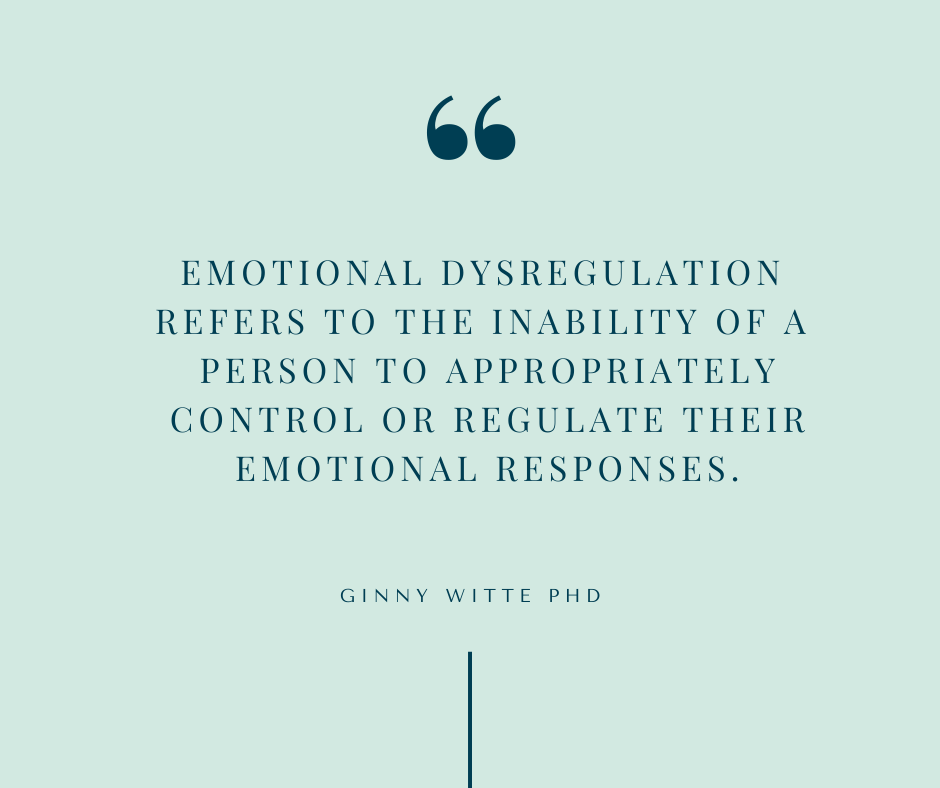If you experience trauma, a trigger can sometimes feel like the rug has been pulled out from under you. The change can come unexpectedly and leave you floundering as you try to get back up, only to have the rug pulled out again.
Some people feel like their insides are racing 1000mph, while the rest of the world is moving at normal speed. This change in feeling is called dysregulation, and it can be short-lived, or last for long periods of time. During a dysregulated phase, a person’s ability to reason or think clearly is greatly diminished. Their behavior may not make sense to others around them.
Anyone who hasn’t experienced trauma may find it difficult to understand dysregulation.
From the outside, a traumatized person’s behavior seems completely unrelated to the current situation.
On the inside, their body is working to its best ability to keep them safe.
Living With Trauma
For someone living with trauma, their body recruits the internal and external functions needed for protection or safety.
When you are in immediate danger, it takes too much time and energy to think through your options, review different scenarios, and mull over a solution or escape. Instead, your automatic safety responses kick in.
If a train is barreling towards you, you don’t think – you just act! You jump out of the way and maybe even grab the person next to you as you go. You don’t stop and assess the situation. You don’t try to convince the person it would be in their best interest if they get off the tracks.
You just act.
In these moments of reaction, blood flows away from the frontal parts of your brain to the limbs to prepare you to jump back. Without adequate blood flow in your front brain, your thinking and words can become a jumbled mess.
For someone with trauma, this experience is their everyday reality. This leaves them feeling bewildered, helpless, foolish, and frustrated to say the least.
We all have our own individual responses depending upon our age, development, life experiences, and coping skills. When interacting with someone with trauma, it’s important to remember that they do not process or respond to life events as you would.

It’s also important to treat others who have experienced trauma carefully, with compassion, and love. Their bodies are doing what they were designed to do. Keep them safe.
Their behavior may not fit the present circumstances. It may be that something in the current environment has triggered a memory of danger and their body is protecting them physically and or emotionally. As a teacher, parent, or friend you can show kindness, give compassion, and provide space for them to return to balance. Your understanding and support can be key in their healing process.

Walking on Marbles
A couple of months ago I was working with a student who was struggling with multiplication and division.
For this work, I typically use marbles as objects for students to group and ungroup.
I handed the student a bag of marbles and she turned it upside down on the table. As you can guess, the marbles bounced and rolled in every direction. Most of the marbles rolled onto the floor.
As I pondered this moment later, I realized how much this is like trauma.

Living with trauma can feel much like walking on a floor of marbles! Imagine the frightening feeling of not being balanced or grounded. You worry about moving forward for fear of falling.
All your thought and energy is occupied trying to find balance and not slip and fall! This is very little capacity left for thinking about anything else.
Snow Globe
Most of us have had the experience of shaking a snow globe and watching the snow swirl and fly around on the inside. After you hold it still, the snow gently falls to the bottom and we shake it up again.

There is something mesmerizing about watching the snowflakes drift gently to the bottom and feeling the quiet and peace that settle over you.
For people with trauma, life feels like they are inside the snow globe, but no one ever stops shaking it. They are endlessly turned upside down, swirling out of control, and never able to relax and feel the peace of the snow settling.
The Rickety Bridge
Have you ever tried to walk across a swinging bridge? These are common on children’s playground equipment. With each step the bridge will sway and move, making it extra challenging to cross.
Playground bridges always have safety measures in place such as handrails and secure attachments.
Living with trauma is similar to walking across an old wooden bridge, stretching between two tall mountains, without any safety features.
The distance to the other side seems endless, the ground is too far below to see. Your stomach sinks and you don’t even want to take the first step. You are shaking at the thought of crossing.
The fear is overwhelming and overtakes any ability to reason that you might have. So it is with trauma. You live with the same fear that you would experience if you had to cross that bridge.

Alphabet Soup
All of us experience stress from time to time. In moments of high stress, do you ever feel unable to think clearly?
You forget things easily. Maybe it’s hard to get organized or wrap your head around what needs to happen next. Maybe you even misplace things around the house.
High levels of stress can even cause you to lose your words. You can’t put thoughts together or complete a sentence, and your words come out all jumbled like alphabet soup.
Trauma creates the same kind of stress response in the body. When someone is experiencing a traumatic event, or reexperiencing one, their thinking skills go offline. Jumbled words, scrambled thoughts, and an inability to think or speak clearly is a reality they live with.
These are only a few examples of what trauma feels like. If you are someone living with trauma, I’d love to hear from you. I invite you to connect and share your examples of what trauma feels like.

Resources
Dunn, E. C., Nishimi, K., Gomez, S.H., Powers, A., & Bradley, B. (2018). Developmental timing of trauma exposure and emotion dysregulation in adulthood: Are there sensitive periods when trauma is most harmful? Journal of Affective disorders, 227, 869-877. https://www.sciencedirect.com/science/article/abs/pii/S0165032717311205?via%3Dihub
Fassbinder, E., Schweiger, U., Martius, D., Brand-de-Wilde, O., & Arntz, A. (2016). Emotion regulation in schema therapy and dialectical behavior therapy. Frontiers in Psychology, 7,1-19. doi:10.3389/fpsyg.2016.01373
Pelinini, S. (2018). An age-by-age guide to help kids manage emotions. The Gottman Institute. https://www.gottman.com/blog/age-age-guide-helping-kids-manage-emotions/
.




